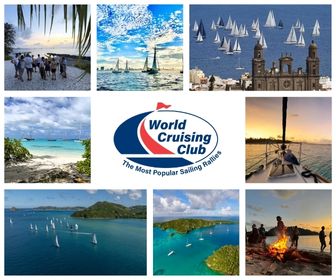Cruising Musings: An Ode to AIS
Noonsite Sub-Editor Megan continues the monthly series covering cruising topics that are often overlooked, yet a major part of life on board. For the past 8 years, Megan and her family have called their Boreal 47 expedition monohull, SV Zephyros, home. This seventh installment in the series covers some thoughts on technology and how AIS make life safer and reduces stress at sea.
Published 1 month ago
Technology Joy: An Ode to AIS
For this month’s musings I’m meandering into the technical, to talk about a piece of gear that makes cruising safer and continues to impress after 8+ years and 47,500 nm of sailing.
Discussing the ways to leverage Automatic Identification System (AIS) at sea can quickly devolve into highly technical speak or turn into a laundry list of benefits – all aspects that deserve detailed discussions. But, in the spirit of these musings, this month I simply want to touch on the way AIS makes every mariner around happier.
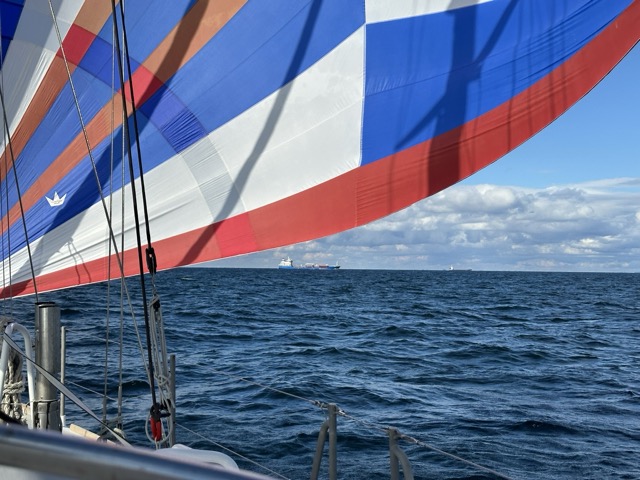

Collision Avoidance: A Timeless Challenge
Since the first day that two boats approached each other on the water, mariners have been trying to avoid collisions and understand their fellow mariner’s intentions. We’ve advanced from yelling, to signal flags, to shooting cannon balls, to radio communications, and now automated data sharing.
AIS broadcasts details such as the vessel name, identifier, type, size, position, course and speed. The higher powered versions also share heading, rate of turn, and destination. This data is automatically processed, and vessels’ closest point of approach are instantly plotted along with the time to the interaction and their proximity. Endless manual plotting and maneuvering boards are no longer required to avoid collisions. Don’t know what a maneuvering board is? Count yourself blessed.
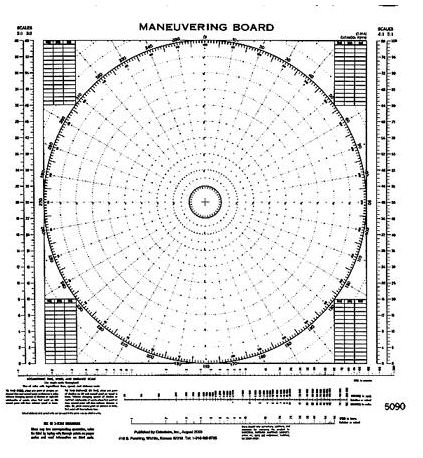

AIS in Brief
AIS was developed in the 1990s and by the early 2000s most large vessels (300GT+) were required to have the higher-powered Class A type transceiver aboard. The lower powered Class B type was introduced in 2006 and from there AIS has continued to develop and become more widely installed. Governments now mandate AIS on most commercial vessels.
The lower powered – and less expensive – Class B AIS units, have made the technology accessible to every mariner and vastly improved situational awareness for any cruiser that chooses to install one. In many places in the world they are becoming mandatory (or are mandatory for vessels over a certain size). While some sailors remain hesitant to broadcast their position, AIS’s benefits far outweigh the concerns. With AIS now widely available, it’s an essential tool that continues to impress.
Why Sailors Need AIS
Let’s face it, sailboats are unpredictable, especially when the winds are gusty and shifting. Our speeds fluctuate and our course isn’t as consistent as a motoring vessel. Large vessels have means of tracking boats with sophisticated radars, but small sailboats often don’t return a significant radar signature. We can also sometimes be difficult to see if the sea state is large or the conditions are less than favorable.
AIS shows other vessels our speed and course, helping them anticipate our movements with a better sense of what we are up to. Larger vessels can see how much we are being affected by the conditions and how well we are maintaining our attempts to remain predictable when crossing their paths.
The Laws of the Sea
As prior Naval Officers, Jon and I often discuss bridge watch standing while passing large commercial vessels. The captain will have given standing orders to their watch standers about when (s)he needs to be notified about other ships passing close by.
We have found it almost a game to watch how things set up on a crossing situation with large vessels – at around 15 or 20 minutes prior to when our closest point of approach will be. You can see what the large vessel has as orders and watch the minor adjustments to speed and course to maintain a crossing of more than ¼ mile or ½ mile – or maybe a whole mile at night. While shifting, gusting winds vary our course and speed involuntarily, the ship’s bridge team can be seen adjusting to ensure a set separation at our eventual closest point of approach.
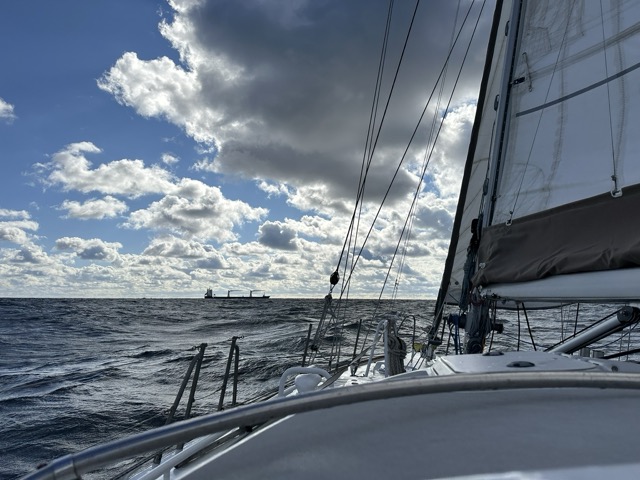

We continue to be impressed that our little sailing boat is given our COLREGs (Collision Regulations) right to be the ‘stand-on’ vessel in open water. Under the COLREGs, our small vessel (when sailing, but not when motoring) is supposed to maintain course and speed, while the larger vessels are to keep clear of us as the ‘give-way’ vessel. While we know this is the accepted international rule, when sitting in our tiny floating home and staring at a large container ship or super tanker coming towards us, it can still feel a bit disconcerting. The large vessels have the unofficial law of gross tonnage on their side as they would likely not even notice running us over.
Ultimately, every vessel must avoid collisions. If big ships don’t adjust, we must. Self-preservation looms more important than being right, especially when moving around in our floating home with the people and possessions we hold most dear.
Crossing Busy Channels
Every time we cross a vessel traffic scheme or busy channel, we play a game of Frogger. This feels especially true when you see it all plotted out on a video display aboard your vessel. When sailing in confined areas, sailing vessels are obligated to keep clear of larger vessels that are using channels and are constrained by draft or otherwise limited in their ability to maneuver.
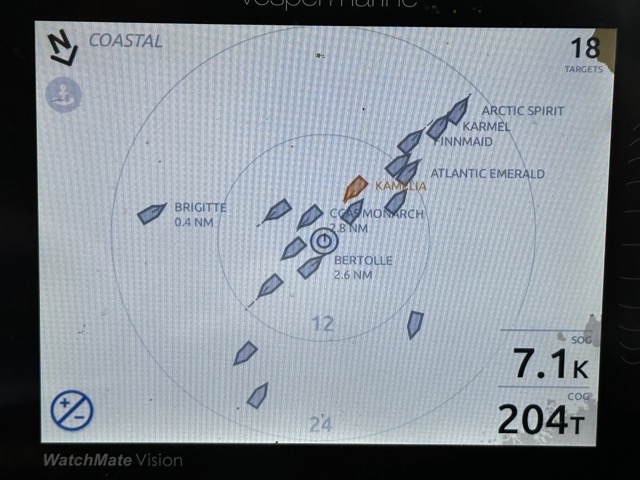

Further offshore, large vessels typically move in traffic separation schemes, if passing through a channel or constrained area. Vessels which need to cross this separation scheme are obligated to cross as perpendicularly as possible and to otherwise respect the scheme as much as possible.
Crossing a busy traffic scheme with ships going in opposite directions at 2-4 times our speed, remains a marvel to watch as the traffic quietly and efficiently morph around us without the need for a single radio call. When we watch the AIS tracks closely, we can see the tiny variations in speeds and headings that make it all happen safely. These small preemptive changes by commercial shipping 15-30 minutes away mean that nobody must make disruptive maneuvers at the last minute to maintain safety at sea.
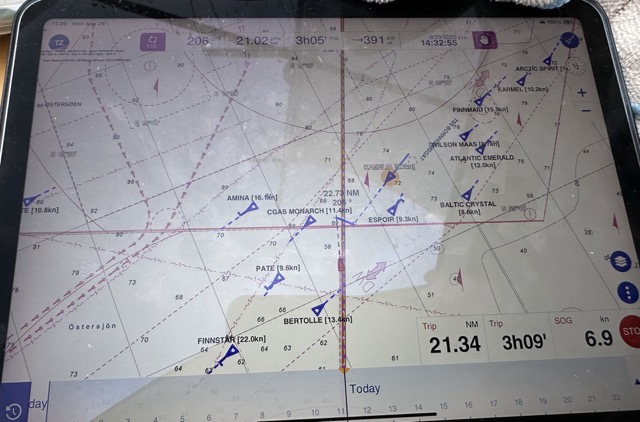

Stress Reduction
Watching it all unfold simply makes me happy. It relieves much of the stress of navigating across high traffic areas making sailing much more joyful. I also know that it makes the jobs of the watch standers on large ships easier. AIS gives commercial mariners one less reason to dislike the unpredictable sailboats that still ride the winds just as their predecessors would have done years before.
There are so many other ways that we find AIS to be an essential tool from visibility to insights to planning, but delving into those will wait for another time.
How has AIS changed your sailing experience? Share your stories in the comments or on social media—we’d love to hear them.
Thank you for this space and continuing to join me on my musings! May you enjoy your own safe and inspiring adventures and let us know any topics about life on board and long- distance cruising that you would like covered in future installments.
Megan Schwartz
SV Zephyros
Noonsite Sub-Editor
…………………………………
About the Author
Noonsite editorial team member, Megan Schwartz, joined Noonsite in October 2024 concentrating on research and updating country formalities. She lives on board SV Zephyros with her husband and two teenage boys (18 and 16 years old) and they have been cruising full-time, since 2017. Zephyros is an aluminum, expedition monohull which suits the family’s style of cruising perfectly as they enjoy high-latitudes and places less travelled, but have also cruised popular Mediterranean and Caribbean destinations.
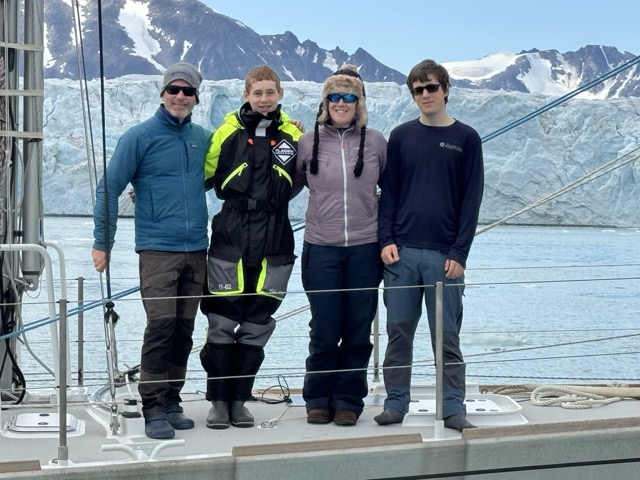

…………………………………
Other Noonsite reports in the Cruising Musing Series:
- Cruising Musings: The Power of Sleep and Resilience
- Cruising Musings: Creepy Crawlers and Nature’s Pest Control
- Cruising Musings: What Do You Do All Day?
- Cruising Musings: The Things We Keep, Yet Rarely Use
- Cruising Musings: Life is Easier, But the Easy Things are Harder
- Cruising Musings: Finding Balance
…………………………………
© 2025 Noonsite. Do not reproduce without permission. All rights reserved.
The opinions expressed in this article are the author’s own and do not necessarily reflect the view of Noonsite.com or World Cruising Club.
If you have found this information useful, become a paid member to enjoy unlimited use of Noonsite plus many other perks. Your membership fees really help our small, dedicated team keep country information up-to-date in support of cruisers worldwide. Find out more about Noonsite Membership levels and benefits.
Subscribe to our FREE monthly newsletter.
Related to the following Cruising Resources: Communications, Communications Equipment, Computers and Tablets, Cruising Information, Cruising with Children, Electrics and Electronics, Equipment, General, Insights, Liveaboard Tips, Navigation, Planning and Preparation, Position Reporting, Travel Information



